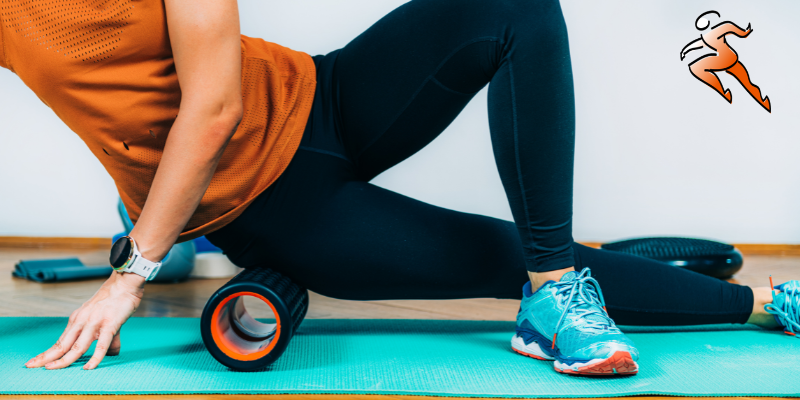Foam rolling is generally safe unless you have broken a bone or torn a muscle. Be careful foam rolling on joints, as it can cause hyperextension in those areas. For the best explanation, take a look at Dr. Mims’ explanation in this article for the proper way to foam roll.

Some things to note:
- Start light.
- Don’t foam roll one muscle for longer than two minutes.
- Ease into painful spots by hitting the areas right around the painful one, and the sensitivity should decrease.
- If you foram stretch out a cold muscle you are more likely to injure it. Foam rolling before a workout means you will be less likely to injure yourself.
There is no perfect one-way to foam roll. There are so many equipment options, making it seem overwhelming and specific when it isn’t.
What is Foam Rolling?
Foam rolling is a type of soft tissue work or myofascial release. Foam rolling helps to alleviate pain and tension caused by adhesions that form between your muscle and fascia. When the foam roller applies pressure to your muscles it reduces pain and inflammation. Foam rolling at the end of a workout is recommended, as well as the day after a heavy workout.
How Does Foam Rolling Aid Recovery?
Foam rolling (correctly) breaks up the myofascial adhesions and helps relieve symptoms of delayed-onset muscle soreness
What is Fascia?
Fascia is a thin layer of connective tissue that acts as a casing around your muscles, separating them from other organs. Fascia is designed to stretch as you move, healthy fascia is smooth and flexible. Lack of movement or certain repetitive movements that overwork one part of the body, or traumas like injuries and surgery can cause the fascia to become stuck together or thicken. This is also known as forming myofascial adhesions. Muscles should glide smoothly under fascia, but in the space between, the adhesions form, causing the muscle to get stuck during gliding, leading to muscle knots. Over time, myofascial adhesions build up and limit mobility, cause pain, and decrease muscle strength.
For example, think of fascia as a kind of plastic wrap surrounding each of our muscles in the body; it is meant to offer support but stretch as we move due to being smooth and flexible. With lack of movement or trauma, fascia can become “crinkled up” or stuck together over time which is called a myofascial adhesion. Over time, with more lack of movement due to pain avoidance or compensation, these adhesions can get worse by restricting the muscles ability to move and form tender, hard nodules or knots in the muscles.
What Are Myofascial Adhesions?
Adhesion formation is a natural part of the muscle-building process. Muscle breakdown happens, and we want this to happen! It’s an early step to building muscles. While in repair, collagen fibers are used to lay down new muscles. The newer collagen fibers are more disorganized and pliable than established muscle, and they tend to get tangled which leads to adhesions.
Which Foam Roller Should I Use For Pain?
As mentioned above, there are many foam rollers on the market, and this makes foam rolling seem more complicated than it is. A simple foam roller that is comfortable for you to use is all you need. If you are not use to using a foam roller, consider one that is on the softer side while your technique improves.
When To See A Doctor For Muscle Pain?
If the pain you’re experiencing is persistent and foam rolling has not helped, then it is time to consult a physician. Please schedule an appointment with one of our physicians. If you are unsure if you need an appointment, please schedule a No-cost Virtual Consultation with one of our physicians to discuss what your next steps should be.